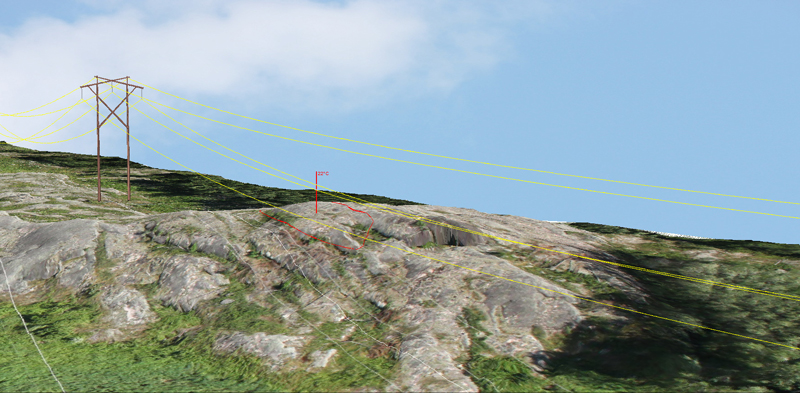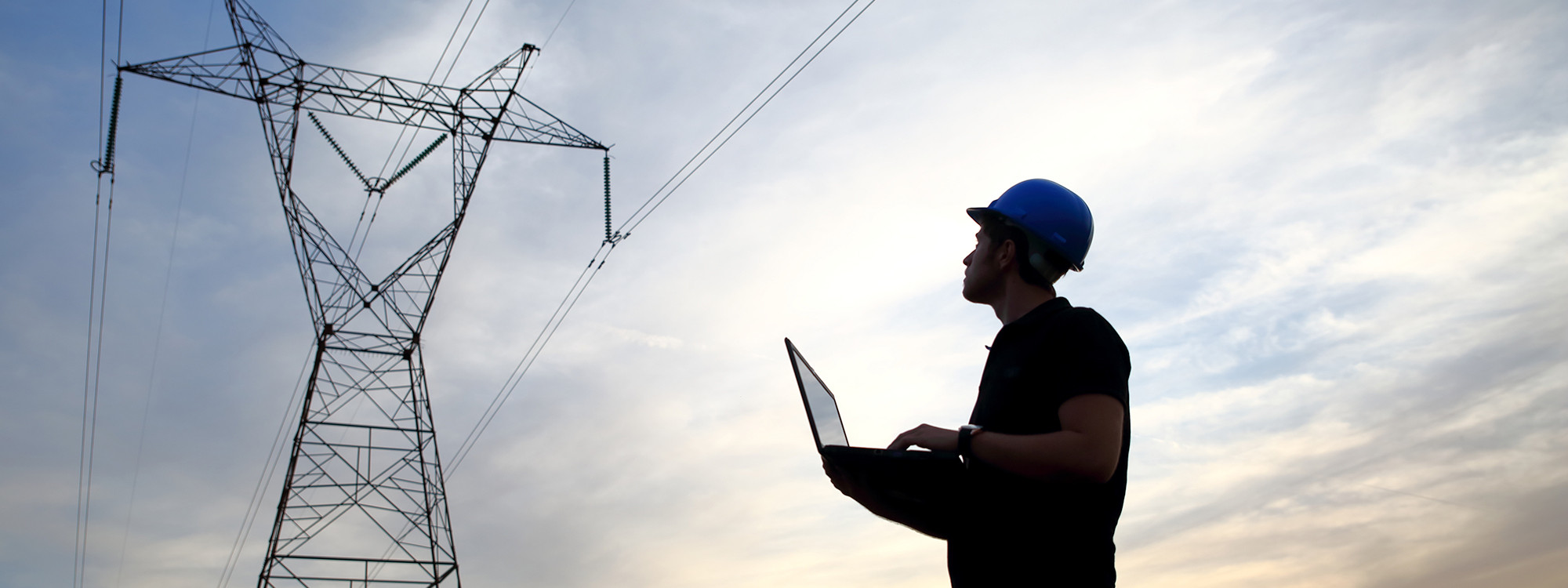Analyses and Reports

Analyses of your transmission and distribution structures, conductors, and corridors lets you make informed decisions on how to upgrade, operate, and maintain your system.
Using the PLS suite (PLS-CADD, PLS-POLE, and PLS-TOWER) along with in-house algorithms, we deliver a wide range of analyses.
Our analyses capabilities include:
- Vegetation Analysis
- Thermal Rating Analysis
- Creep Analysis
- Guy Sensitivity Analysis
- Ice and Structure Loading Analysis
Vegetation Analysis
When maintaining your right of ways, vegetation is a frequent challenge. To help you meet NERC requirements, increase reliability, reduce fire risks, and increase safety we can perform vegetation analysis on your lines.
Vegetation risks – within and adjacent to your right of way – are identified and prioritized according to the level of risk they impose. With our engineering reports, you will be able to make knowledgeable maintenance decisions and use your resources more efficiently.
Our vegetation analyses include:
-
Coordination of data collection alternatives to provide a turnkey solution;
-
Feature coding of all collected data;
-
Experienced utility engineers performing the analysis to client-specific criteria and codes including Canadian Standards Association (CSA) and National Electrical Safety Code (NESC);
-
Graphical and table-based reporting including vegetation risks and actual clearance distance for each span;
-
Creation of plan and profile drawing based on LiDAR collected data;
-
Sensitivity study to determine the most cost-effective maintenance solution.
Thermal Rating Analysis
We conduct a full-thermal rating analysis on transmission lines. The analysis uses LiDAR data to create an as-built model of the conductors, structures, and complete right of way in PLS-CADD. With this information, we model your lines and conduct high-temperature simulations to identify critical clearance issues to ground features, aerial obstacles, vegetation, and other encroachments.
Our analysis helps you understand the problems and limitations and provides you with better information to make knowledgeable operation and upgrade decisions.
Our thermal ratings analyses feature:
-
Coordinated data collection alternatives to provide a turnkey solution;
-
Coding of all collected data;
-
Computer modelling in PLS-CADD to determine actual maximum operating temperature;
-
Experienced utility engineers perform the analysis to client-specific criteria and codes including
-
Canadian Standards Association (CSA) and National Electrical Safety Code (NESC);
-
Graphical and table-based reporting including thermal rating and actual clearance distance for all spans;
-
Innovative techniques for analyzing underbuilt circuits and crossing wires;
-
Creation of plan and profile drawing based on LiDAR collected data;
-
Create a sensitivity study to determine your most cost-effective upgrade options.
Creep Analysis
Creating accurate line models can be challenging especially when as-built data was collected at a time between when a line is at an initial and final creep. Using a proprietary algorithm, a realistic creep, which takes into account the age of the line, is calculated and used to build an accurate as-built model of your line within PLS-CADD. This allows the models to be used with far more accuracy for all future analytics.
-
Coordinate data collection alternatives to provide a turnkey solution;
-
Feature coding of all collected data;
-
Computer modelling in PLS-CADD, PLS-POLE, and PLS-TOWER for as-built models;
-
Innovative techniques to determine realistic creep.
Guy Sensitivity Analysis
Guy tensions play a significant role in how towers behave when loaded and having appropriate guy tensions are important to ensure no tower damage is experienced. We aim to help you do that with guy sensitivity analysis. By building your tower structures in PLS-CADD and running them through strenuous load scenarios, an acceptable range for guy tensions is identified to minimize tower movement and optimizing loading in members.
Ice and Structure Loading Analysis
Ice on your lines can damage your assets, cause outages and clearance violations. In an effort to minimize these impacts and to understand the line behaviour your lines will be modelled in the PLS suite and stressed with simulated conditions to identify areas of interest.
MHI works with you to find cost-effective solutions to address problem areas and meet your goals. Solutions can include line upgrades, physical de-icing techniques, or continuous monitoring.
-
Coordinate data collection alternatives to provide a turnkey solution;
-
Feature coding of all collected data;
-
Computer modelling in PLS-CADD, PLS-POLE, and PLS-TOWER to determine accurate line behaviour during icing events.


